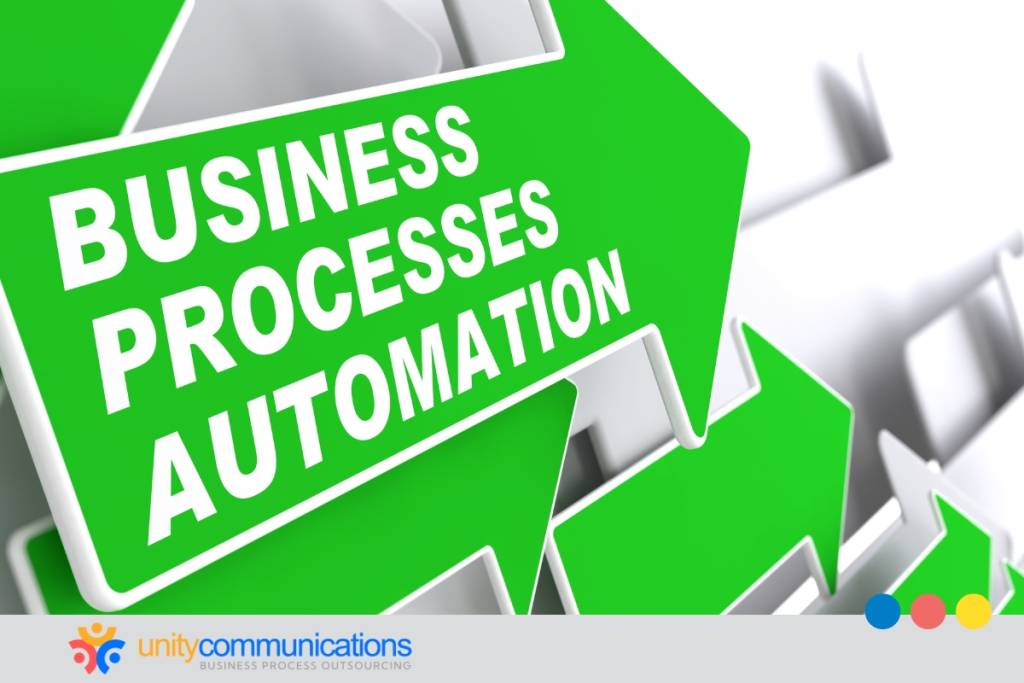Table of Contents
In modern business, adaptability is critical to survival. Organizations have leveraged business process outsourcing (BPO) for decades to streamline operations, reduce costs, and enhance efficiency.
However, as technology continues to advance and demands for agility intensify, business process automation (BPA) has emerged as a new approach. This shift moves businesses from simple delegation to intelligent automation.
This article delves into the evolution of business process automation and its transformative impact on companies worldwide.
How BPO evolved into business process automation

To start, what is BPO? It refers to contracting specific business functions or processes to third-party service providers. These tasks range from customer service and technical assistance to back-office operations such as accounting, human resources, and data entry.
BPO traces its roots back to the 18th and 19th centuries when companies began to realize the benefits of specialized and distributed labor. Large-scale manufacturing and complex business operations highlighted the need for efficiency and cost reduction. This period marked the beginning of outsourcing certain tasks to specialized external providers.
However, the concept of business process outsourcing that we know today gained momentum in the late 20th century. This era saw the emergence of BPO providers catering to specific industries and functions. Key industries that reaped substantial benefits are software development, financial services, medical transcription and billing, and call centers.
In the mid-2000s, BPO evolved beyond simply being a cost-saving measure to a strategic tool for business transformation. Companies began outsourcing to reduce expenses, drive innovation, improve service quality, enhance operational efficiency, and gain a competitive advantage.
The BPO industry underwent further transformation in the 2010s with the integration of artificial intelligence (AI) and digital technologies. Robotic process automation (RPA) and cognitive technologies automate repetitive, rules-based tasks, such as data entry and migration, invoice processing, and inventory system updating.
Today, the BPO landscape continues to evolve, with organizations increasingly leveraging automation, machine learning (ML), and analytics to optimize end-to-end business processes. The evolution of business process automation represents a new era of efficiency, agility, and innovation in business.
Technological drivers of BPA
BPA entails using technology to automate and streamline repetitive, manual tasks. Unlike traditional outsourcing, which involves delegating tasks to external service providers, BPA optimizes internal activities by implementing software programs, systems, and workflows that reduce human intervention and increase efficiency.
Approximately 80% of companies are accelerating their adoption of process automation. Several technological advancements have played a crucial role in this trend. These include the following:
- RPA involves using software robots or “bots” to computerize repetitive, rules-based tasks traditionally performed by humans. These bots can mimic human actions within digital systems, such as logging into applications, copying and pasting data, and filling out forms. RPA can automate 70% to 80% of rule-based tasks across various departments.
- AI and ML enable computers to learn from data and make decisions without explicit programming. They use natural language processing (NLP) and sentiment analysis to derive insights, predict outcomes, and optimize functions. AI can streamline document processing, identify financial anomalies, and personalize customer interactions.
- Analytics and big data tools grant firms unparalleled access to vast amounts of structured and unstructured data. With big data analytics, businesses extract valuable insights into processes, customer behavior, market trends, and operational performance. They inform decisions, especially on process enhancements.
- Cloud computing transforms information technology (IT), application deployment, and service management by offering scalability, flexibility, and accessibility. Organizations use this technology to swiftly deploy BPA solutions, integrate with existing systems, and manage resources without significant upfront hardware or infrastructure investments.
- Internet of Things (IoT) is a network of interconnected devices that collect and share data over the internet. It enables real-time monitoring and control of physical assets and processes, increasing visibility and efficiency.
- Workflow automation tools help design, execute, and optimize complex business processes without manual intervention. They feature drag-and-drop interfaces, pre-built templates, and easy integration to streamline process implementation and design. They reduce cycle times, eliminate errors, and ensure compliance.
The future of BPA

BPA’s future points toward a landscape defined by unprecedented efficiency, agility, and innovation. The evolution of business process automation holds immense promise for organizations willing to embrace and harness the power of intelligent automation technologies.
Here’s a glimpse of what lies ahead:
- Hyperautomation. The convergence of RPA, AI, and ML will drive the era of hyperautomation. Organizations will increasingly adopt end-to-end automation solutions, from routine tasks to complex decision-making, for seamless collaboration across the enterprise.
- AI-powered insights. AI will play an increasingly central role in BPA, delivering actionable insights derived from vast volumes of data. AI algorithms will unearth patterns, predict outcomes, and optimize strategies, empowering organizations to make smarter, data-driven, real-time decisions.
- Intelligent automation ecosystems. BPA will evolve into interconnected ecosystems of intelligent automation technologies, platforms, and services. These ecosystems will allow smooth integration and cooperation between various platforms, promoting collaboration and innovation within organizations and across industries.
- Personalized and adaptive experiences. BPA will help deliver personalized and adaptive customer experiences. Through AI-driven analytics and process automation, businesses can tailor interactions, products, and services to individual preferences and behaviors. This approach enhances customer engagement, satisfaction, and loyalty.
- Ethical and responsible automation. As automation becomes more pervasive, ethical considerations around data privacy, security, and algorithmic bias will emerge. Organizations must prioritize responsible automation practices that promote transparency, fairness, and accountability. They must use diverse datasets to train algorithms and review and correct automated decisions.
- Human-machine collaboration. BPA will allow humans and machines to work synergistically to achieve shared goals. Automation will augment human capabilities. Employees will then have more time for value-added activities that require human ingenuity and empathy.
Impact of BPA on cost reduction and operational efficiency
The impact of BPA on cost reduction and operational efficiency is profound and multifaceted, offering organizations numerous benefits:
- Improved cost savings. An immediate benefit of BPA is the reduction in labor costs. By automating tasks, organizations can significantly decrease reliance on human resources, reducing labor expenses. This is evident in industries with high volumes of routine processes, such as data entry, invoice processing, and customer support.
- Increased productivity. BPA streamlines workflows and eliminates inefficiencies, leading to increased productivity across the organization. Automated processes can operate 24/7 without breaks or downtime, accelerating task completion times and improving overall operational throughput.
- Reduced errors and inaccuracy. Manual data entry and processing are prone to errors, leading to costly mistakes and rework. By ensuring data accuracy and adherence to predefined standards, BPA helps avoid the financial risks of billing inaccuracies, compliance violations, and customer dissatisfaction.
- Faster turnaround times. BPA accelerates the speed at which businesses execute processes, resulting in faster turnaround times. Organizations can now accomplish tasks that used to require hours or days to complete in minutes, meeting tight deadlines and capitalizing on time-sensitive opportunities, such as adopting new technologies and expanding into new markets.
- Optimized resource allocation. BPA optimizes resource allocation by shifting human capital to creative, problem-solving, and strategic tasks. This capability improves employee satisfaction and morale and maximizes talent within the organization.
- Consistent and compliant workflows. BPA maps out workflows based on standardized procedures and best practices, ensuring that each process step is followed and reducing deviations. Automation tools are also configured to comply with predefined procedures. For example, automated approval workflows ensure that each step follows established guidelines.
- Data-driven decision-making. BPA supports decision-making by providing real-time data, process transparency, and standardized procedures that enable organizations to make timely, informed decisions that drive business growth and competitiveness.
The bottom line

The evolution of BPO to business process automation reflects a journey of strategic partnerships aimed at driving business growth and transformation in an increasingly globalized and technological world.
BPA empowers organizations to optimize operations, drive innovation, be adaptable, and remain competitive. It represents a strategic shift from traditional manual processes to intelligent automation that promotes efficiency, agility, and growth.
Let’s connect to harness the power of BPA in your organization.




